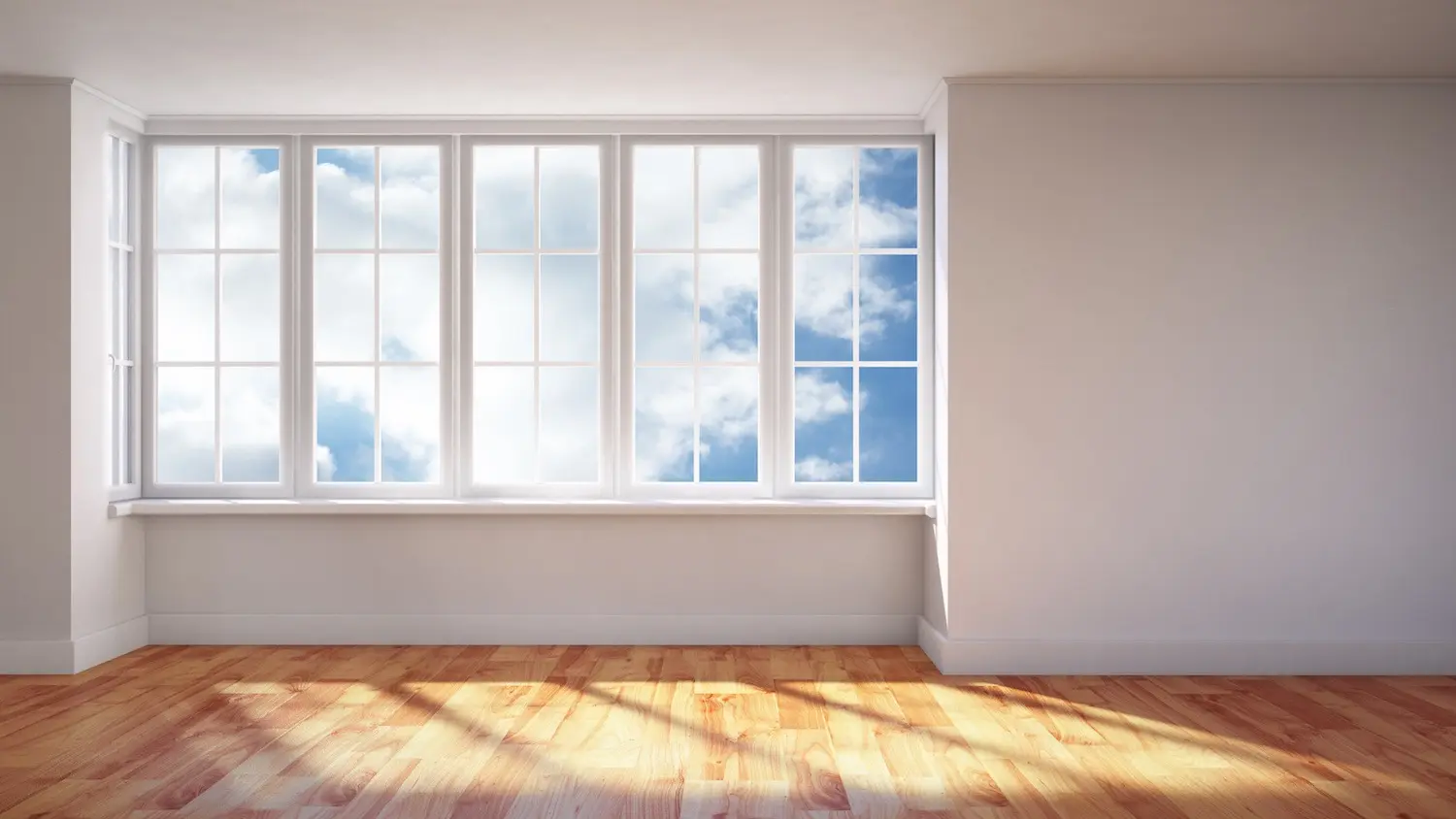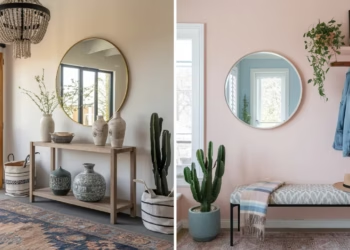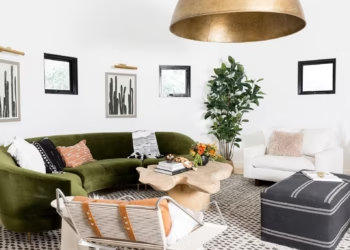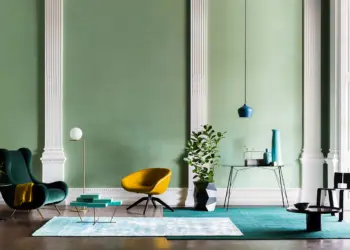Choosing the ideal window size for a room is a crucial decision that significantly impacts both the interior aesthetics and exterior appeal of your home. In this comprehensive guide, we will delve into the essential factors that should guide your decision-making process, ensuring that you make informed choices that align with your design preferences and adhere to relevant building codes.
Table Of Content
Factors Influencing Window Size
Window Sill Height
The International Residential Code (IRC) stipulates that sills on operable Egress bedroom windows should not exceed 44 inches from the floor. Compliance with this code ensures the safety and functionality of the windows, particularly in emergency situations. If you are considering a lower sill for design purposes, alternative options such as non-operable windows, like floor-to-ceiling or picture windows, can be explored.
Window Head Height
While there are no strict rules governing the height of windows, your design choices play a pivotal role. Striking a balance is crucial to optimize natural light and accommodate window treatments. Insufficient space between the ceiling and window head may limit natural light, hindering energy efficiency. Conversely, too little space may impede the installation of curtain rods and other essential window treatments.
Window-to-Height Proportion
The proportion of window size to the height of your room is a design consideration influenced by architectural style. Design choices should align with the overall aesthetic, avoiding mismatched elements that could compromise visual harmony. For example, traditional architecture may call for grilles, with wider windows complemented by taller grilles. In contrast, modern architecture may favor continuous windows without grilles.

Window Size for Each Room: Finding the Perfect Fit
Living Room Window Size Guidelines
Your living room is the heart of your home – a place of relaxation and socializing. When it comes to windows, size matters. Larger windows invite the outdoors in, creating an open and airy feel. Consider factors like room orientation and furniture placement to strike the perfect balance.

Bedroom Window Size Recommendations
In the bedroom, tranquility is key. Optimal window sizing in the bedroom involves careful consideration of privacy, natural light, and the outside view. Imagine waking up to the gentle morning sun without sacrificing your privacy. It’s all about finding the sweet spot.

Optimal Window Size for the Kitchen
The kitchen, a space where culinary magic happens, deserves windows that complement its functionality. Adequate natural light enhances your cooking experience, making the kitchen both practical and delightful. Discover the art of balancing form and function in the heart of your home.
- Prioritize Natural Light and Ventilation: Larger windows in the kitchen can enhance natural light, creating a brighter and more inviting space. This not only contributes to a pleasant cooking environment but also reduces the need for artificial lighting during the day. Adequate ventilation is equally important, especially in a space prone to heat and odors. Consider strategically placing larger windows to optimize both light and airflow in the kitchen.
- Balance Functionality with Aesthetics in Window Design: The kitchen space is a functional space, but that doesn’t mean sacrificing aesthetics. Balancing form and function is key to a well-designed kitchen. Choose window styles that not only serve practical purposes but also contribute to the overall visual appeal of the space. Consider sleek and modern designs that seamlessly integrate with the kitchen’s aesthetic while providing the necessary functionality.

Dining Room Window Considerations
Picture this: a beautifully set dining table bathed in the warm glow of natural light. Achieving this picture-perfect scene involves choosing the right window size for your dining room. We’ll explore how to create an inviting space where meals become memorable moments.
- Optimal Window Placement: Position your dining table strategically to take advantage of natural light. Place the table near large windows, allowing the warm glow to illuminate the dining space. This not only enhances the aesthetic appeal but also creates a welcoming atmosphere. Consider the direction of sunlight throughout the day to maximize the impact of natural light on your dining table setup.
- Consider Window Treatments: While optimizing natural light, consider window treatments that complement your dining room decor. Sheer curtains or blinds can diffuse harsh sunlight, creating a soft and ambient glow. Choose window coverings that allow you to control the amount of light, ensuring a comfortable and well-lit dining experience. This balance between openness and control contributes to the overall charm of your dining table setting.

Bathroom Window Size Best Practices
The bathroom, often a private retreat, requires careful window considerations. Balancing the need for ventilation with maintaining privacy is an art. Dive into tips on selecting moisture-resistant materials to ensure your bathroom windows stand the test of time.
- Vinyl Blinds: Opt for window coverings made from moisture-resistant materials like vinyl blinds. Vinyl is known for its resistance to moisture, making it an ideal choice for bathroom windows. It withstands humidity without warping or deteriorating, ensuring long-term durability in the moist bathroom environment.
- Faux Wood Shutters: Consider faux wood shutters as an alternative to traditional wood. These shutters provide the elegance of real wood while being resistant to moisture damage. Faux wood is less prone to warping or swelling in humid conditions, making it a practical and aesthetically pleasing option for bathroom windows.

Popular Window Styles for Each Room
Windows come in various styles, each with its own charm. Discover which window styles suit different rooms best, from the elegance of bay windows in the living room to the practicality of casement windows in the kitchen.
- Living Room: Bay Windows
- Reason: Bay windows add elegance and a sense of spaciousness to the living room. They provide panoramic views, ample natural light, and a cozy reading or seating nook.

- Bedroom: Double-Hung Windows
- Reason: Double-hung windows offer versatility with both upper and lower sashes movable. They allow for optimal ventilation and are easy to clean. Their classic design complements various bedroom styles.

- Bathroom: Casement Windows
- Reason: Casement windows are practical for bathrooms, offering privacy and efficient ventilation. Their hinged design allows for maximum airflow while maintaining a sleek and unobtrusive appearance.

- Kitchen: Awning Windows
- Reason: Awning windows are ideal for kitchens, providing excellent ventilation even during light rain. Their upward-opening design prevents debris from entering, making them both practical and functional in a kitchen setting.

- Dining Room: Picture Windows
- Reason: Picture windows create a focal point, allowing unobstructed views and ample natural light in the dining room. They are perfect for showcasing outdoor scenery and enhancing the dining experience.

Making Informed Decisions
When determining window size, it’s vital to consider your specific circumstances and design preferences. While there are no rigid rules, adherence to building codes ensures both safety and compliance. Seek guidance from Affordable Windows experts for a tailored approach to your window sizing needs.

FAQs
What is the ideal window size in a room?
The ideal window size in a room depends on various factors, including room dimensions, purpose, and desired natural light. Standard sizes like 24″ x 36″ are common, but larger windows may be preferable for spacious rooms.
What is the ratio of windows to room size?
The ratio of windows to room size is typically expressed as a percentage of the floor area. A common guideline is 1/6th of the floor area, meaning the window area should be around 16.67% of the total room floor space.
How is the best window size for a room determined?
The best window size for a room is determined by considering:
- Room Dimensions: Larger rooms may benefit from larger windows.
- Purpose: Consider the function of the room and desired natural light.
- Aesthetics: Choose a size that complements the overall design.
- Building Codes: Adhere to local building codes for safety and regulations.
What is the size of a typical window bedroom?
The size of a typical bedroom window varies but is often around 24″ x 36″. However, standard window widths for bedrooms can range from 36″ to 60″, providing flexibility based on room dimensions and design preferences.










